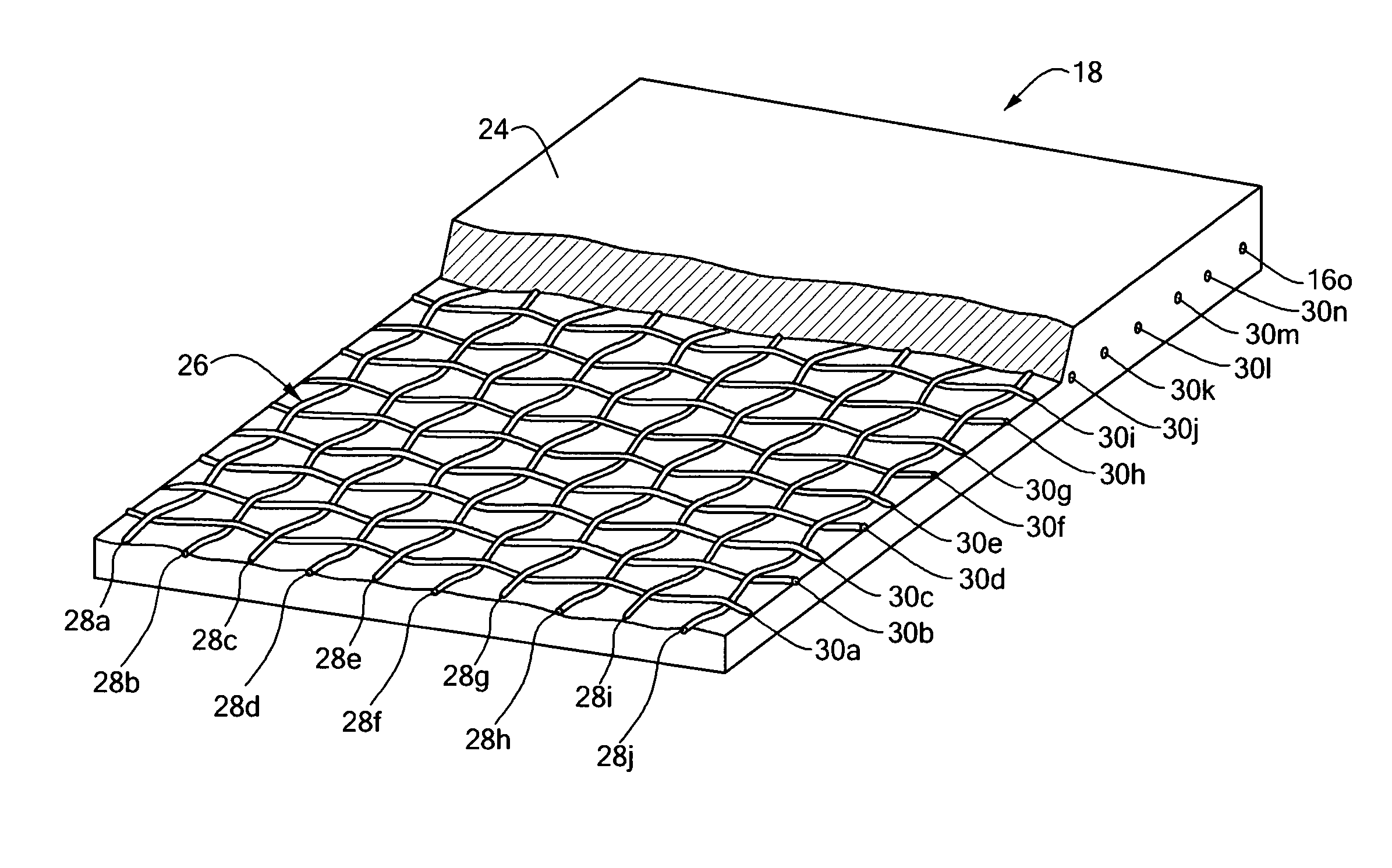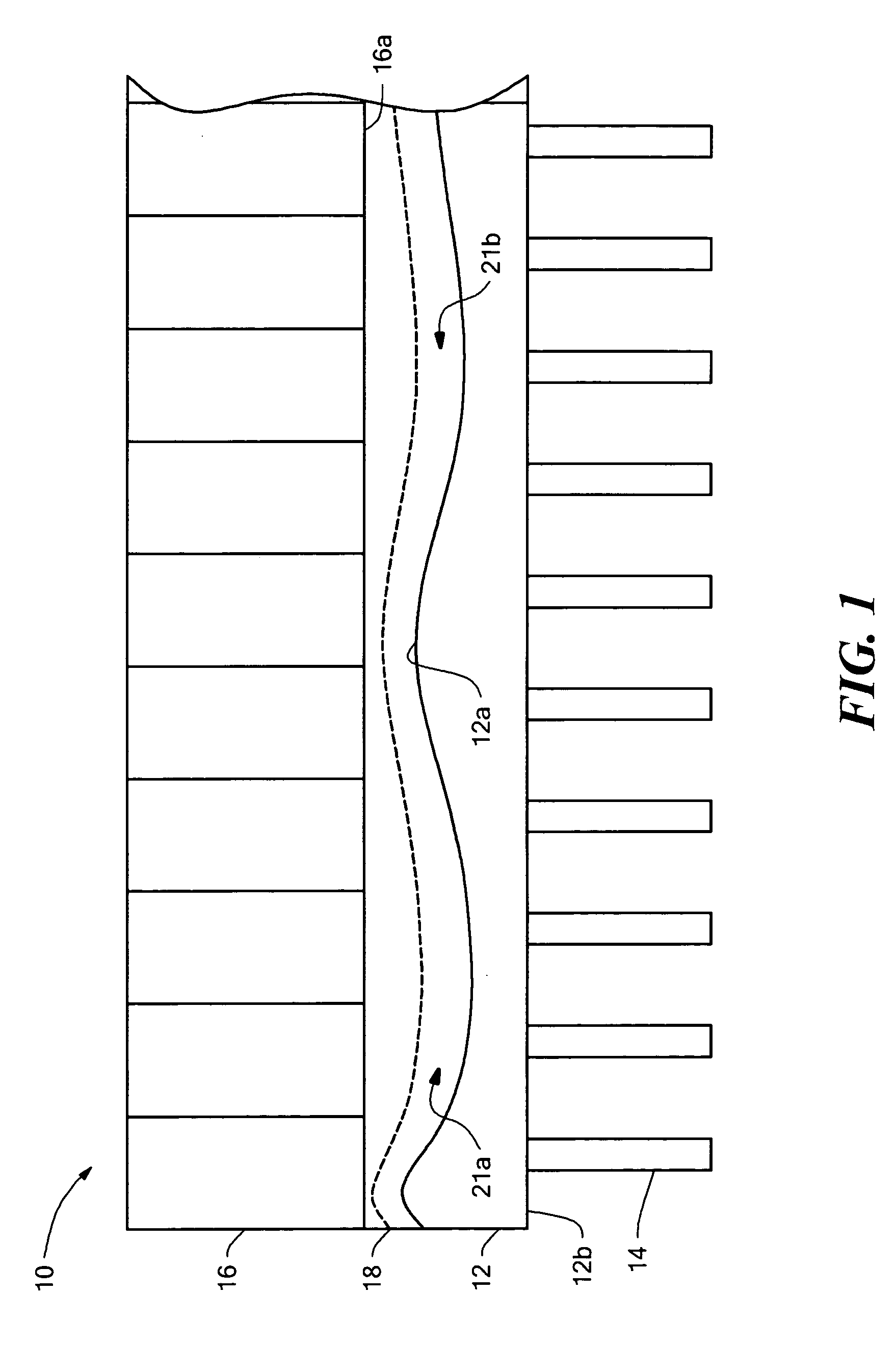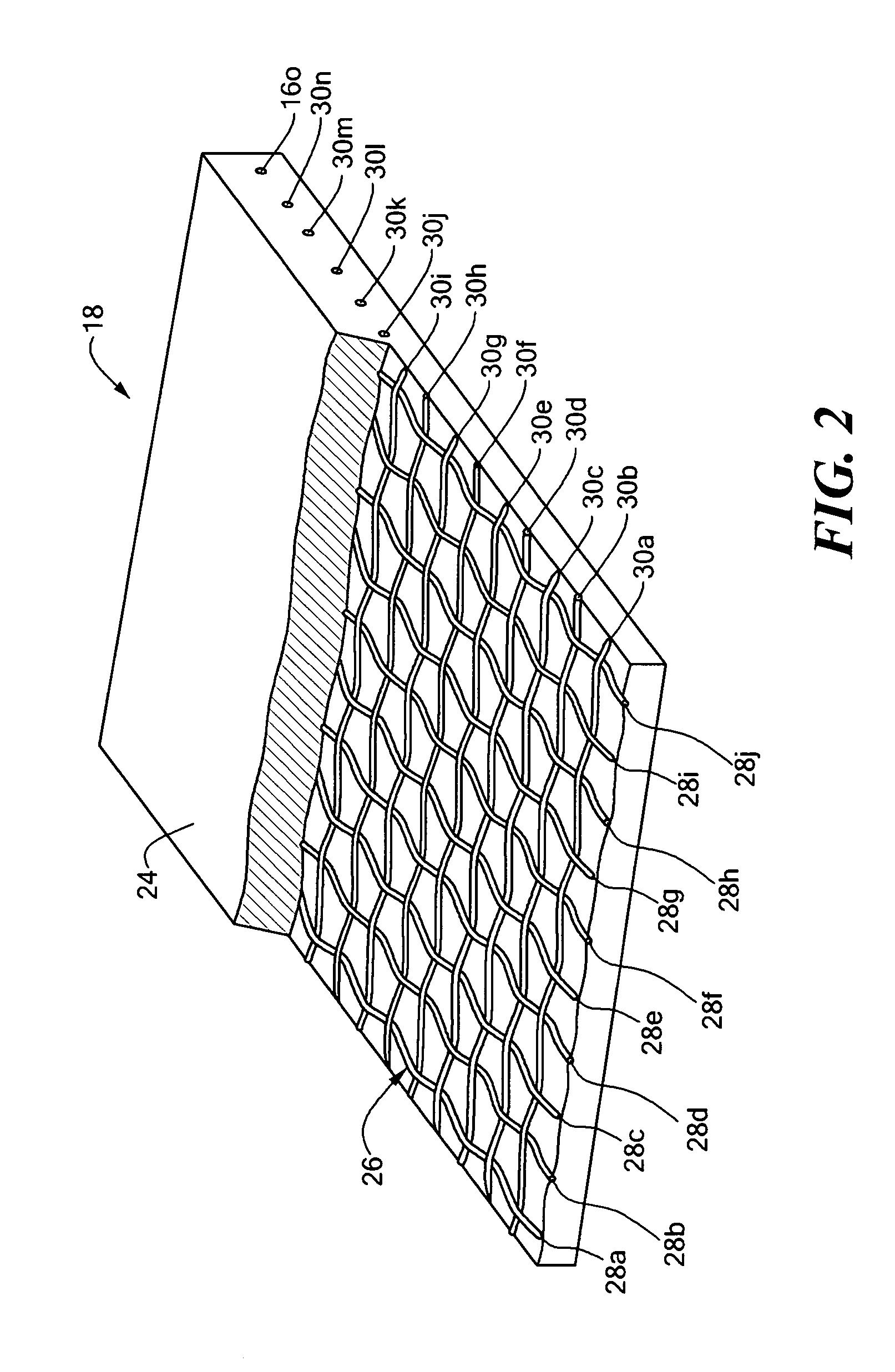Thermal interface and method of making the same
a technology of thermal interface and heatsink, which is applied in the direction of cooling/ventilation/heating modification, semiconductor/solid-state device details, semiconductor devices, etc., can solve problems such as voids or spaces, and achieve the effect of rapid removal of heat, improved heat removal efficiency, and improved heat removal efficiency
- Summary
- Abstract
- Description
- Claims
- Application Information
AI Technical Summary
Benefits of technology
Problems solved by technology
Method used
Image
Examples
Embodiment Construction
[0027] A thermal interface comprising a mesh impregnated with a slurry of liquid metal and thermally conductive particles is used to provide optimal thermal conductivity between a device such as an integrated circuit (IC) and a heat sink.
[0028] Referring to FIG. 1 an assembly 10 includes an integrated circuit (IC) or other heat generating device 12 having first and second opposing surfaces 12a, 12b and pins 14 projecting from the surface 12b and a heatsink 16 having a thermal interface 18 disposed between a surface of the heatsink and a surface of the IC. The surface 12a of the IC 12 is non-linear. While the non-linearity here is exaggerated to help illustrate one problem solved by the present invention, even nonlinearity on the order of three thousandths of an inch can be a significant problem when it comes to removing heat from the device 12. It should be appreciated that while only the device 12 is shown having a nonlinear surface, the surface of the heatsink 16 may also be nonl...
PUM
| Property | Measurement | Unit |
|---|---|---|
| diameter | aaaaa | aaaaa |
| size | aaaaa | aaaaa |
| melting temperature | aaaaa | aaaaa |
Abstract
Description
Claims
Application Information
 Login to View More
Login to View More - R&D
- Intellectual Property
- Life Sciences
- Materials
- Tech Scout
- Unparalleled Data Quality
- Higher Quality Content
- 60% Fewer Hallucinations
Browse by: Latest US Patents, China's latest patents, Technical Efficacy Thesaurus, Application Domain, Technology Topic, Popular Technical Reports.
© 2025 PatSnap. All rights reserved.Legal|Privacy policy|Modern Slavery Act Transparency Statement|Sitemap|About US| Contact US: help@patsnap.com



